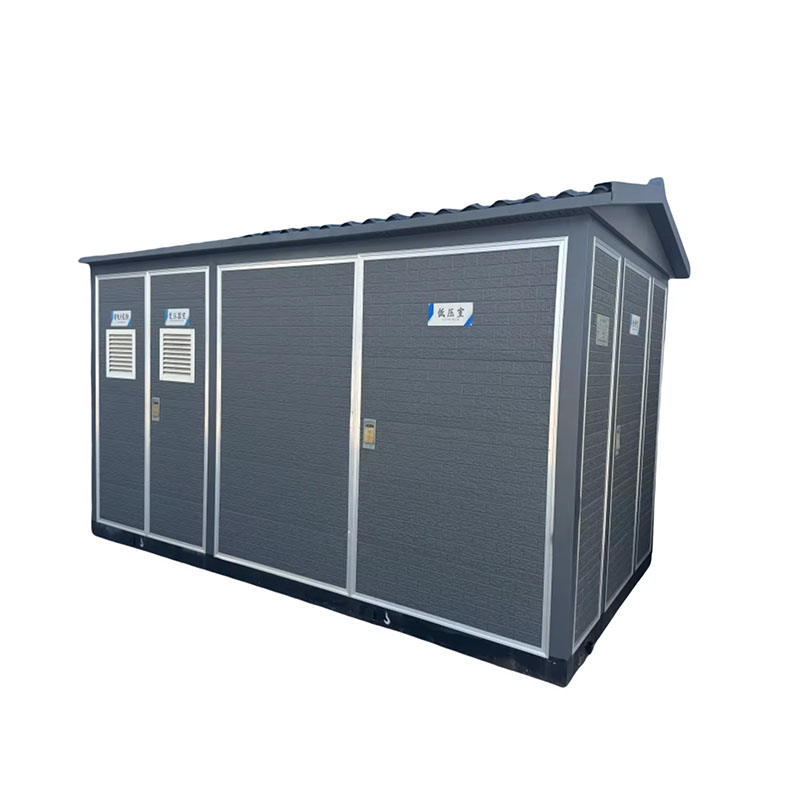Electrical Switchgear: The Backbone of Power Distribution Systems
2025-03-18
In the world of electricity and power distribution, safety, efficiency, and reliability are paramount. A key component that ensures these qualities in electrical systems is electrical switchgear. Whether in residential, commercial, or industrial settings, switchgear plays a crucial role in controlling, protecting, and isolating electrical equipment.
In this blog, we will explore the different types of electrical switchgear, their applications, and why they are essential for the smooth and safe operation of electrical networks.
What is Electrical Switchgear?
Electrical switchgear refers to a combination of electrical devices used for controlling, protecting, and isolating electrical circuits and equipment. It is designed to interrupt, connect, or protect electrical circuits from overloads, short circuits, or faults. Switchgear can be used in both low voltage (LV) and high voltage (HV) systems and is a critical part of power plants, substations, industrial facilities, and commercial buildings.
Typically, switchgear consists of various components, including:
- Circuit breakers
- Switches
- Fuses
- Relays
- Disconnectors
- Busbars
These components work together to ensure that electrical systems operate smoothly, safely, and efficiently.
Types of Electrical Switchgear
There are several types of switchgear based on their design, voltage level, and intended application. These are the main categories:
1. Low Voltage Switchgear (LV Switchgear)
Low voltage switchgear is used in residential and commercial buildings, where the electrical voltage is typically below 1 kV (1000 volts). It is used for protecting circuits, isolating sections of systems for maintenance, and controlling equipment. Common applications include:
- Main Distribution Boards in homes and businesses
- Motor Control Centers (MCC) for managing motors in industries
- Panel boards for controlling lighting and power circuits
Components of LV switchgear include circuit breakers, fuses, isolators, and distribution boards.
2. Medium Voltage Switchgear (MV Switchgear)
Medium voltage switchgear operates in the range of 1 kV to 36 kV and is commonly used in industrial plants, substations, and power distribution networks. This type of switchgear is designed to protect equipment from faults and maintain safe operation when handling medium voltage circuits.
Applications include:
- Substations for transforming and distributing power
- Power plants for controlling distribution lines
- Industrial plants for managing power supply to heavy machinery and equipment
Components of MV switchgear include vacuum circuit breakers, load break switches, and fuse switches.
3. High Voltage Switchgear (HV Switchgear)
High voltage switchgear is used for electrical systems that operate at voltages higher than 36 kV, typically in power generation, transmission, and distribution systems. HV switchgear plays a crucial role in controlling and protecting high voltage equipment, preventing the risk of electrical fires, and ensuring the integrity of the system.
Applications include:
- Transmission networks for managing power from plants to substations
- Substations for controlling high-voltage circuits
- Power generation plants for handling large power transformers
HV switchgear components are typically more advanced and include SF6 circuit breakers, gas-insulated switchgear (GIS), and oil-immersed circuit breakers.
4. Gas-Insulated Switchgear (GIS)
Gas-insulated switchgear is commonly used for high voltage and extra-high voltage applications. GIS utilizes SF6 (sulfur hexafluoride) gas as the insulating medium, offering excellent dielectric properties and ensuring that the equipment is safe, compact, and efficient.
GIS is used in areas with space constraints, such as urban substations or areas with high environmental risk, like flood-prone regions. Its main advantages include:
- Compact design suitable for urban environments
- High reliability with reduced maintenance requirements
- Excellent fault protection and quick isolation
Functions of Electrical Switchgear
Switchgear serves various important functions in electrical systems:
1. Control
Switchgear enables operators to control electrical circuits and equipment by either turning them on/off or adjusting operational parameters. It allows for efficient management of electricity, ensuring proper load distribution across different parts of the system.
2. Protection
Switchgear is responsible for protecting electrical circuits from faults, such as overcurrent, short circuits, and earth faults. It detects abnormal conditions and automatically disconnects the faulty section, preventing damage to equipment and reducing the risk of fires or electrical hazards.
3. Isolation
Switchgear provides a means of isolating parts of the electrical system for maintenance or repair. This isolation prevents personnel from coming into contact with live parts, ensuring safety while working on electrical equipment.
4. Monitoring and Control
Modern switchgear is often equipped with monitoring devices such as sensors and relays, allowing operators to track performance and detect any potential issues before they escalate into significant problems. Smart switchgear systems are increasingly used in automation, integrating sensors and communication technologies to improve efficiency and reduce downtime.
Why is Electrical Switchgear Important?
1. Safety
The primary function of switchgear is to protect both people and equipment from electrical hazards. By providing reliable circuit protection, switchgear prevents overloading, short circuits, and other electrical faults, significantly reducing the risk of electrical fires, equipment damage, and personal injury.
2. Reliability
Switchgear ensures the reliable operation of electrical systems, especially in industries where power outages can lead to significant losses. By automatically detecting faults and disconnecting problematic sections, switchgear helps maintain the smooth functioning of the entire network.
3. Efficiency
Efficient power distribution is crucial for minimizing energy loss and improving overall system performance. Switchgear plays a key role in optimizing power flow, balancing loads, and ensuring that electricity is distributed appropriately to meet demand.
4. Compliance
Electrical systems, especially in industrial and commercial settings, must adhere to strict safety standards and regulations. Switchgear helps businesses comply with these regulations, ensuring that their electrical infrastructure meets national and international safety codes.
Conclusion
Electrical switchgear is a vital component of modern electrical systems, ensuring safety, efficiency, and reliability across a wide range of applications. From protecting high-voltage transmission networks to controlling residential power circuits, switchgear is indispensable for the smooth functioning of electrical grids and systems.
Whether you're designing a new electrical installation or upgrading an existing one, choosing the right switchgear is essential for maximizing safety and ensuring that your electrical infrastructure remains operational under various conditions. With technological advancements in switchgear design, such as gas-insulated and smart systems, the future of electrical protection looks even more reliable and efficient.



